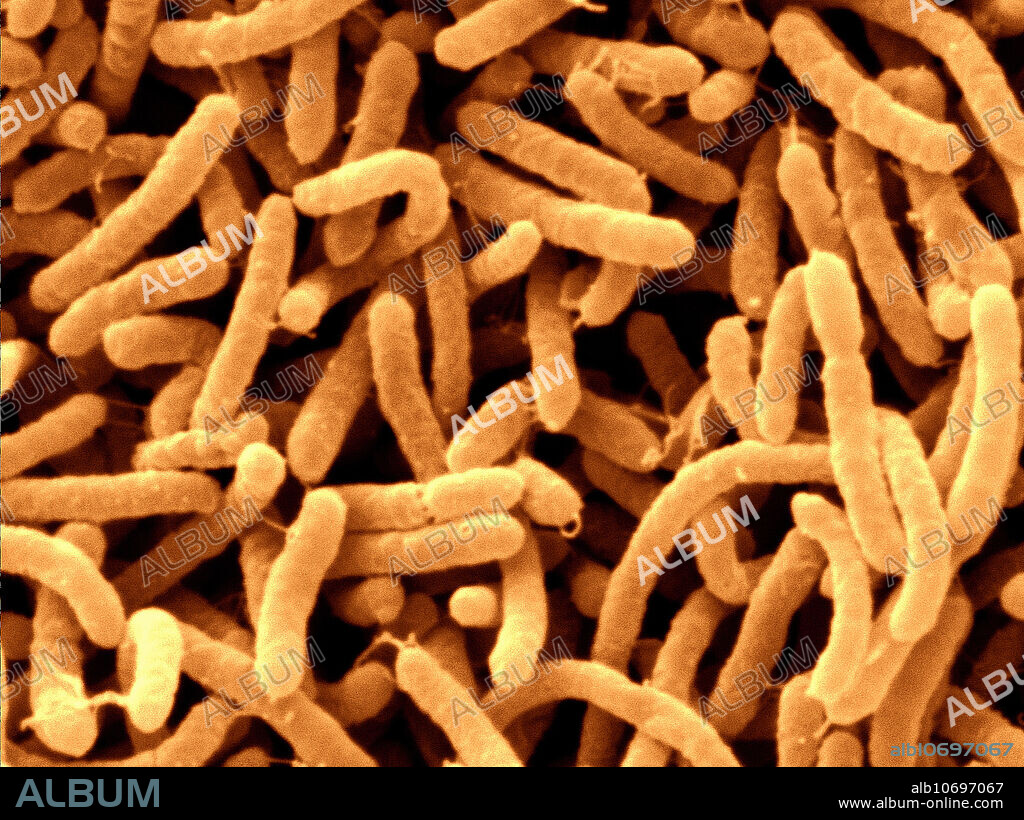alb10697067
Arcobacter Septicus Bacteria, SEM

|
Añadir a otro lightbox |
|
Añadir a otro lightbox |



¿Ya tienes cuenta? Iniciar sesión
¿No tienes cuenta? Regístrate
Compra esta imagen

Título:
Arcobacter Septicus Bacteria, SEM
Descripción:
Traducción automática: Microscopio electrónico de barrido mejorado en color de arcobacter septicus. Las bacterias Arcobacter viven en el suelo, lodos, heces, agua estancada, aguas residuales y otros entornos naturales. La carne cruda y poco cocida (carne de res, cerdo, cordero), la leche cruda no pasteurizada, el agua no tratada y los mariscos han sido implicados en la transmisión de Arcobacter spp. Ahora se los reconoce como importantes patógenos humanos y animales que causan problemas reproductivos en los cerdos, anomalías en la trucha arco iris, diarrea en animales y humanos, e incluso casos raros pero graves de bacteriemia (presencia de bacterias en la sangre). Su temperatura óptima es de 25 a 30 C, por lo que la temperatura corporal relativamente alta de los pollos (41 C) los protege de que sus intestinos sean colonizados por Arcobacter. Hace algún tiempo, Arcobacter fue llamado Campylobacter aerotolerante. Arcobacter es miembro del grupo Epsilobacteria, que también incluye Campylobacter y Helicobacter spp. Él
Colour enhanced scanning electron microscope of arcobacter septicus. Arcobacter bacteria live in the soil, sludge, faeces, stagnant water, sewage and other natural environments . Raw and undercooked meat (beef, pork, lamb), raw unpasteurized milk, untreated water, and shellfish have been implicated in the transmission of Arcobacter spp. They are now recognized as important human and animal pathogens which have been found to cause reproductive problems in pigs, abnormalities in rainbow trout, diarrhoea in animals and humans, even rare but severe cases of bacteremia (presence of bacteria in the blood). Their optimal temperature is 25 to 30 C so the relatively high body temperature of chickens (41 C) protects them from having their intestines colonized with Arcobacter. Some time ago, Arcobacter were called aerotolerant Campylobacter . Arcobacter is a member of the Epsilobacteria group, which also includes Campylobacter and Helicobacter spp. It
Crédito:
Album / Science Source / Scimat
Autorizaciones:
Modelo: No - Propiedad: No
¿Preguntas relacionadas con los derechos?
¿Preguntas relacionadas con los derechos?
Tamaño imagen:
3232 x 2420 px | 22.4 MB
Tamaño impresión:
27.4 x 20.5 cm | 10.8 x 8.1 in (300 dpi)
Palabras clave:
BACTERIAS • COLOR • COLORIDO • ELECTRON • EXPLORACION • FLAGELO • FLAGELOS • HELICOIDAL • MAYOR • MEJORAR • MICROBIOLOGIA • MICROGRAFIA • MICROSCOPIA • MICROSCOPIO • MOVILES • NADIE
 Pinterest
Pinterest Twitter
Twitter Facebook
Facebook Copiar enlace
Copiar enlace Email
Email
